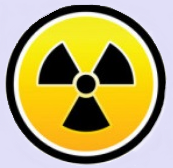|
|
|
|
|
|
|
|
|
Dr inż. Agnieszka Boś-Liedke
| 2018-01 - obecnie
|
|
|
Adiunkt
|
|
|
 WF UAM pokój: 134 WF UAM pokój: 134
 +48 61-829-5239 +48 61-829-5239
 agnieszka.bos-liedke@amu.edu.pl agnieszka.bos-liedke@amu.edu.pl
 0000-0002-4009-0501 0000-0002-4009-0501
 4224381 / AAE-1122-2021 4224381 / AAE-1122-2021
 24366052300 24366052300

|
|
|
|
|
|
|
|
|
Publikacje
Magistrowie
Licencjusze
Seminaria
|
6. |
Czechowski T., Samolej A., Baranowski M., Boś-Liedke A., Chlewicki W., Jurga J., Tadyszak K. |
|
|
|
|
|
Acta Physica Polonica A, 133(3), 710-712 (2018) |
|
|
DOI: 10.12693/APhysPolA.133.710 (Pobrane: 2018-04-12) |
|
|
|
5. |
Boś-Liedke A. Walawender M., Woźniak A., Flak D., Gapiński J., Jurga S., Kucińska M., Plewiński A., Murias M., Elewa M., Lampp L., Imming P., Tadyszak K. |
|
|
|
|
|
Cell Biochemistry and Biophysics, , 1-10 (2017) |
|
|
DOI: 10.1007/s12013-017-0824-3 (Pobrane: 2020-10-23) |
|
|
|
4. |
Tadyszak K., Boś-Liedke A., Jurga J., Baranowski M., Mrówczynski R., Chlewicki W., Jurga S., Czechowski T. |
|
|
|
|
|
Magnetic Resonance in Chemistry, 54(2), 136-142 (2016) |
|
|
DOI: 10.1002/mrc.4330 (Pobrane: 2020-10-25) |
|
|
|
3. |
Woźniak A., Noculak A., Gapiński J., Kociołek D., Boś-Liedke A., Zalewski T., Grześkowiak B.F., Kołodziejczak A., Jurga S., Bański M., Misiewicz J., Podhorodecki A. |
|
|
|
|
|
RSC Advances, 6(98), 95633-95643 (2016) |
|
|
DOI: 10.1039/c6ra20415e (Pobrane: 2018-04-04) |
|
|
|
2. |
Boś A., Bergmann R., Strobel K., Hofheinz F., Steinbach J., den Hoff Jv. |
|
|
|
|
|
EJNMMI Research, 2(1), 47 (2012) |
|
|
DOI: 10.1186/2191-219X-2-47 (Pobrane: 2018-01-28) |
|
|
|
1. |
Cegiel M., Bazarnik M., Biskupski P., Winiarz S., Gutek J., Boś A., Suto S., Mielcarek S., Wawro A., Czajka R. |
|
|
|
|
|
Applied Surface Science, 254(21), 6948-6951 (2008) |
|
|
DOI: 10.1016/j.apsusc.2008.05.001 (Pobrane: 2018-01-28) |
|
|
|
4. |
mgr Kamila Serkowska |
|
|
Analiza teksturalna badania FDG-PET/CT pacjentek z rakiem szyjki macicy |
|
 |
2021-08-23 |
|
Promotor: dr Agnieszka Boś-Liedke
|
|
|
|
3. |
mgr Ewelina Kamińska |
|
|
Pierwszorzędowe parametry statystyczne obrazowania PET/CT – parametry prognostyczne u pacjentów z rakiem głowy i szyi |
|
 |
2021-08-20 |
|
Promotor: dr Agnieszka Boś-Liedke
|
|
|
|
2. |
mgr Paulina Kiempa |
|
|
Analiza parametrów badania FDG-PET pacjentów z rakiem płuca leczonych radioterapią |
|
 |
2020-10-16 |
|
Promotor: dr Agnieszka Boś-Liedke
|
|
|
|
1. |
mgr Jowita Kruczkowska |
|
|
Różnice w powysiłkowych parametrach fizjologicznych dzieci i dorosłych trenujących sporty drużynowe |
|
|
2018-10-02 |
|
Promotor: dr Agnieszka Boś-Liedke
Opiekun naukowy: dr hab. Jan Konarski
|
|
|
|
7. |
lic Barbara Szymkowiak |
|
|
Analiza odpowiedzi biologicznej ludzkich komórek nowotworowych piersi na pochodną kurkuminy z uwzględnieniem mikrośrodowiska guza |
|
 |
2024-09-13 |
|
Promotor: dr Agnieszka Boś-Liedke
|
|
|
|
6. |
lic Mateusz Matusewicz |
|
|
Ocena wpływu nanocząstek złota na odpowiedź radiobiologiczną komórek nowotworowych piersi - model in vitro |
|
 |
2022-07-21 |
|
Promotor: dr inż. Agnieszka Boś-Liedke
|
|
|
|
5. |
lic Magdalena Gross |
|
|
Wpływ oprogramowania na parametry [18F]FDG PET u pacjentów z niedrobnokomórkowym rakiem płuca |
|
 |
2020-09-18 |
|
Promotor: dr Agnieszka Boś-Liedke
|
|
|
|
4. |
lic Anna Odważna |
|
|
Wpływ promieniowania jonizującego na przeżycie komórek nowotworowych linii FaDu |
|
 |
2018-08-28 |
|
Promotor: dr Agnieszka Boś-Liedke
|
|
|
|
3. |
lic Weronika Kijewska |
|
|
Badanie składu kamieni żółciowych za pomoca spektroskopii ramanowskiej i podczerwieni |
|
|
2018-08-03 |
|
Promotor: dr Agnieszka Boś-Liedke
|
|
|
|
2. |
lic Marika Musielak |
|
|
Ocena wpływu dawki i mocy promieniowania jonizującego na komórki raka piersi |
|
 |
2018-07-04 |
|
Promotor: dr Agnieszka Boś-Liedke
|
|
|
|
1. |
lic Jowita Kruczkowska |
|
|
Powysiłkowa pulsoksymetria wysokiej rozdzielczości u osób uprawiających rutynowo sport |
|
|
2016-06-30 |
|
Promotor: dr Agnieszka Boś-Liedke
Opiekun naukowy: prof.dr hab. Ryszard Krzyminiewski
|
|
|
|
2. |
dr Agnieszka Boś-Liedke
|
|
|
2021-10-08
|
|
|
|
|
|
|
1. |
dr Agnieszka Boś-Liedke
|
|
|
2018-03-01
|
|
|
|
|
|
|
|
|

